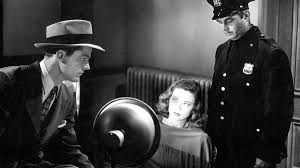Explore the evolution of crime and intrigue from the shadowy realms of traditional noir to Bollywood’s vibrant neo-noir storytelling. Dive into cinematic twists and cultural layers!
The Allure of Crime and Intrigue
Crime and intrigue have captivated audiences for generations, offering a lens into humanity’s darkest corners. From the gritty black-and-white worlds of traditional noir to the technicolor streets of Bollywood’s neo-noir, this genre has evolved dramatically. This article traces the journey of noir—a genre synonymous with moral ambiguity, shadowy aesthetics, and complex characters—to its modern-day interpretation in Indian cinema, shedding light on the cultural and cinematic nuances that define each iteration.
What is Noir? A Dive into Traditional Noir Cinema
Origins and Characteristics of Traditional Noir
Noir, derived from the French word for “black,” emerged in the 1940s and 1950s Hollywood as a distinct style rather than a formal genre. It is characterized by:
- Visual Aesthetics: High-contrast black-and-white cinematography, with heavy use of shadows and chiaroscuro lighting.
- Themes: Fatalism, moral ambiguity, and existential despair.
- Characters: Anti-heroes, femme fatales, and morally conflicted detectives.
- Narratives: Twisted plots involving crime, betrayal, and doomed romance.
Iconic Examples of Traditional Noir
Films like The Maltese Falcon (1941), Double Indemnity (1944), and The Big Sleep (1946) exemplify the genre. These classics introduced audiences to cynical protagonists navigating worlds of deceit and corruption.
Neo-Noir: Reinventing the Genre
The Evolution of Noir into Neo-Noir
Neo-noir represents the modern adaptation of traditional noir, incorporating contemporary themes, advanced cinematography, and diverse cultural influences. While retaining noir’s essence, neo-noir expands its boundaries with:
- Color Cinematography: Enhanced by stylized lighting and mood-centric visuals.
- Modern Themes: Addressing urban alienation, systemic corruption, and psychological depth.
- Cultural Adaptations: Reflecting global and local narratives.
Iconic Neo-Noir Films
Movies like Blade Runner (1982), Se7en (1995), and Drive (2011) have redefined the genre. These films showcase how neo-noir melds classic elements with futuristic settings, graphic realism, and psychological complexity.
The Bollywood Take: Neo-Noir in Indian Cinema
Understanding Bollywood’s Approach to Neo-Noir
Bollywood’s neo-noir owes its uniqueness to the fusion of traditional noir elements with Indian storytelling conventions. These films often explore:
- Moral Duality: Portraying flawed heroes and grey villains.
- Societal Themes: Tackling corruption, caste dynamics, and urban decay.
- Visual Flourish: Combining noir’s shadowy allure with Bollywood’s vibrant cinematography.
Defining Bollywood’s Neo-Noir Gems
1. Johnny Gaddaar (2007)
A heist thriller that masterfully blends suspense, greed, and betrayal, Johnny Gaddaar remains a benchmark for Indian neo-noir.
2. Talaash: The Answer Lies Within (2012)
Starring Aamir Khan, this film delves into grief and supernatural elements while maintaining a noir sensibility.
3. Andhadhun (2018)
A black comedy thriller about a blind pianist entangled in a murder mystery, Andhadhun is a stellar example of Bollywood’s innovative approach to the genre.
Key Elements That Define Bollywood’s Neo-Noir
Cultural Context and Adaptation
Bollywood’s neo-noir thrives on cultural authenticity while borrowing noir’s essence. Unique aspects include:
- Indian Urban Landscapes: The crowded streets of Mumbai often become central to the narrative.
- Societal Nuances: Reflecting India’s socio-political fabric and moral dilemmas.
The Role of Music
Unlike traditional noir, Bollywood’s neo-noir often integrates music, using songs and background scores to amplify tension and emotional depth.
Why the Evolution Matters
The Global Appeal of Neo-Noir
The evolution from traditional noir to neo-noir—and its adaptation by Bollywood—illustrates the genre’s versatility. It highlights the universal appeal of stories that grapple with the human condition, moral ambiguity, and the pursuit of truth.
Bridging Shadows and Stories
From Hollywood’s shadowy alleys to Bollywood’s bustling streets, the journey of noir is a testament to its timeless allure. By marrying universal themes with local narratives, Bollywood’s neo-noir adds a vibrant chapter to the genre’s legacy. As crime and intrigue continue to evolve, the essence of noir—its exploration of humanity’s moral complexities—remains as compelling as ever.
FAQs
What is the main difference between traditional noir and neo-noir?
Traditional noir relies on black-and-white aesthetics and mid-20th-century themes, while neo-noir incorporates modern cinematography, themes, and diverse cultural influences.
What are some must-watch Bollywood neo-noir films?
Johnny Gaddaar, Talaash: The Answer Lies Within, and Andhadhun are excellent examples.
How does Bollywood add its unique touch to neo-noir?
Bollywood’s neo-noir integrates local cultural elements, societal themes, and vibrant visuals, often enhanced by music and dance.
Why is neo-noir popular worldwide?
Neo-noir’s exploration of universal themes like moral ambiguity, psychological depth, and urban decay resonates with global audiences.
Is neo-noir limited to crime stories?
While crime remains a central element, neo-noir often branches into psychological thrillers, sci-fi, and supernatural genres, expanding its thematic reach.
